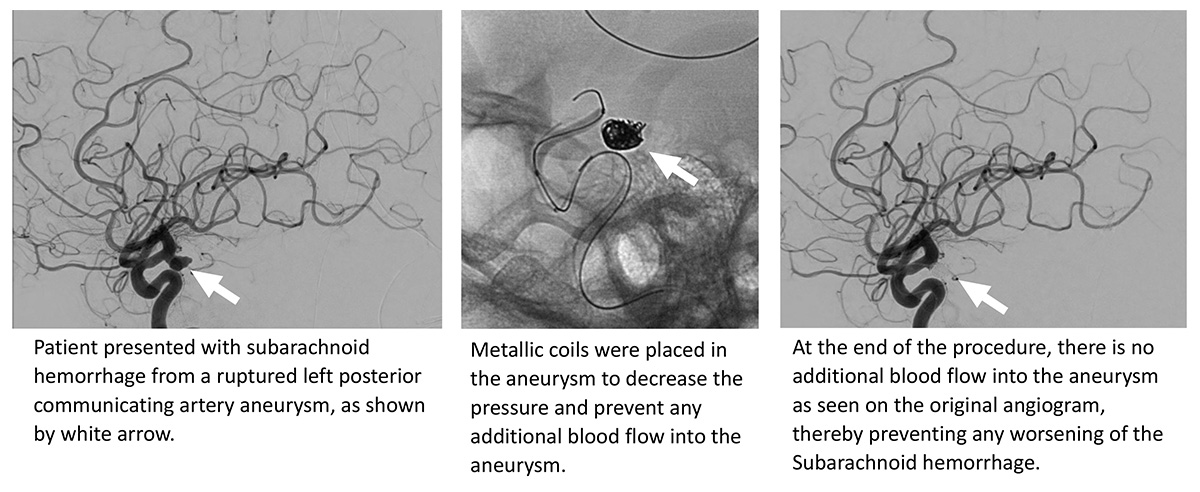Cerebral Aneurysm
An aneurysm is an outpouching of a blood vessel due to weakness of the blood vessel wall.
What is an aneurysm?
There are a number of factors that contribute to aneurysm formation including high blood pressure, smoking, genetics (family history), and connective tissue disorders. Sometimes no cause for aneurysm formation is identified.
Aneurysms are potentially dangerous because they can rupture, which results in bleeding. When aneurysms in the brain rupture, they cause bleeding in and around the brain, a life-threatening condition called subarachnoid hemorrhage.
Subarachnoid hemorrhage is a type of stroke that can result in coma, paralysis and possibly death.
Often aneurysms are found before they rupture because they are seen incidentally on imaging studies such as CTs or MRIs. Other times aneurysms are found because the aneurysm is causing symptoms.
If the aneurysm has not ruptured but is causing symptoms, that is usually because the aneurysm is pushing on a nerve and may cause problems such as a droopy eyelid or double vision.
If the aneurysm has ruptured and caused bleeding into the brain, patients may experience severe headaches, nausea, and vomiting, seizure, or loss of consciousness. This requires prompt medical attention for treatment.
Aneurysms can be treated endovascularly, meaning minimally invasively through the arteries of the wrist or the leg, using devices such as coils, stents, and intravascular flow disruptors.
Coils are commonly used for aneurysms that have ruptured. This involves placing a small catheter inside the aneurysm, which allows delivery of a metal wire that “coils” within the aneurysm and seals it off from circulation thereby preventing any further bleeding.
Unruptured aneurysms are commonly treated with flow-diverting stents placed inside the artery across the aneurysm to “divert” blood flow away from the aneurysm, allowing it to heal.
Aneurysms may also be treated with surgery, most commonly clipping, in which the skull is opened, the aneurysm is dissected away from the brain, and a clip is placed across the aneurysm.
MRAs team of neurointerventional radiologists are fellowship trained and up to date with the latest advancements for the endovascular treatment of cerebral aneurysms.
Request a consultation today:
One of our expert Interventional Radiologists will personally review your case with you, and discuss whether an intervention is the right option for you.
Patients, please note that services may require a referral from your primary care or another provider, but we can help facilitate that process if treatment is deemed necessary. Telehealth consultations may be available depending on the type of procedure required.


